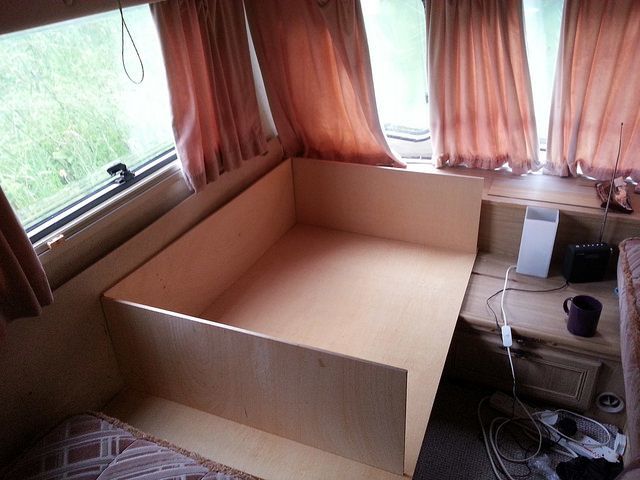Plywood is used in a lot of situations where strength is required. Generally speaking, if the strength of the plywood is not required, then other engineered materials are used. However, there are times when plywood alone isn’t strong enough, or, although it might be strong enough, it isn’t stiff enough to meet the need. In those cases, the plywood needs to be reinforced.
Adding structure
The most common way of reinforcing plywood is by adding structure to it. This can either be an edge piece that drops below the level of the plywood, such as an edge used to support the outer edge of a plywood shelf or structural ribs run underneath the plywood. As a general rule of thumb, the farther these ribs extend from the surface of the plywood, the more strength and stiffness they offer to support it. But what do you do when there isn’t room to put edges and lips below or behind the plywood to support it? Is there another way?
Fiberglass
Yes, plywood can be strengthened by making a plywood and fiberglass composite. This is fairly common for boat decks, where the fiberglass outer shell is backed up by a plywood core or sometimes even a balsa wood core.
Fiberglass adds a lot of stiffness to the plywood, especially when it coats both sides. The fiberglass resists stretching, which is technically called “tension,” that would try to pull the wood fibers slightly apart, allowing the sheet of plywood to bend. In this, it acts in the same way as rebar does when used in concrete structures.
To reinforce plywood with fiberglass, start with clean wood. It should not be painted or prepped in any way. A slightly rough, unsanded surface is best, allowing greater adhesion for the fiberglass resin.
Paint a heavy but even coating of fiberglass resin onto the surface of the plywood. This must be heavy enough to soak into the fiberglass cloth but not enough to run and drip. You will need to work quickly, as the fiberglass resin is a two-part, thermoset plastic that starts to set as soon as you mix it.

Once the surface is wetted, roll out the fiberglass cloth and cover the surface of the plywood, allowing the cloth to extend beyond the edges of the wood. Avoid any wrinkles in the fiberglass cloth, and keep it straight. As you roll it, work out any air pockets that form so it lays smooth. Once the resin is “cured” (not necessarily dry, but has reached hardness) according to the directions on the can, a second coat of resin should be mixed and painted on to cover the top side of the fiberglass cloth. Alternating layers of resin and cloth can be added until the desired strength is reached.
It is best to coat both plywood sides with fiberglass rather than just one side. While only one side may be seen as the finish side, the opposite must be coated for strength and to prevent warping. The resin shrinks slightly as it cures, which can cause the plywood to warp toward the side being worked on. By alternating sides in applying the fiberglass, this warping can be avoided. Remember that this composite’s true strength will come from the fiberglass, not the plywood. Therefore, you want to use enough layers of fiberglass cloth to ensure the strength you need.




